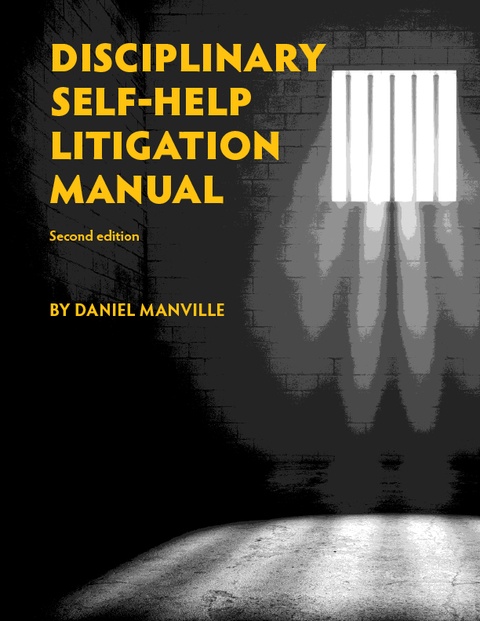Fourth Circuit: Procedurally Unreasonable Sentence Where District Court Failed to Address Defendant’s Non-Frivolous Downward Variance Argument Based on Sentencing Disparity Due to Which State’s Statute Prior Conviction Based Upon
The United States Court of Appeals for the Fourth Circuit held that the U.S. District Court for the Southern District of West Virginia abused its discretion by failing to address the defendant’s non-frivolous argument for a downward variance.
Tytus Lamaar Shields was importing drugs for distribution in Parkersburg, West Virginia, in November 2021 while he was wanted for absconding from pending charges in Ohio. When Parkersburg police discovered that he was wanted, they raided his apartment, finding drugs, cash, and a loaded Ruger LC9 9mm firearm.
The federal government charged Shields under 18 U.S.C. § 922(g)(1) because he admitted to possessing the firearm while knowingly being a convicted felon (he had two priors in Ohio from 2014 for drug distribution).
The Presentence Investigation Report (“PSR”) calculated the Guidelines range without the enhancement under § 2K2.1(a)(4)’s increased base offense level for when a defendant has a prior felony conviction for a “controlled substance offense.” § 2K2.1(a)(4)(A).
The Fourth Circuit had recently decided United States v. Campbell, 22 F.4th 438 (4th Cir. 2022), concluding “that a conviction under West Virginia’s similar controlled substances law did not qualify categorically as a Guidelines ‘controlled substance offense,’” so the PSR deemed § 2K2.1(a)(4) inapplicable to Shields. This resulted in a 30-to-37-month advisory sentencing range.
At sentencing, the Government argued that Campbell was distinguishable from Shields’ situation because the West Virginia statute at issue in Campbell criminalized attempted drug offenses, which were not included in the conduct that the Guidelines intended to criminalize at the time (though they have since been amended to include attempted offenses). In contrast, the Ohio statute Shields was convicted of violating did not criminalize attempted conduct; instead, “the least culpable conduct covered by the Ohio statute is possession with intent to distribute, making Ohio’s drug trafficking law a categorical match for the Guidelines,” the Government argued. Consequently, his base offense level should be 20, resulting in a Guidelines range of 51 to 63 months’ imprisonment, according to the Government. It asked the court to impose a sentence of 51 months.
In response, Shields requested a 36-month sentence and argued that if the District Court adopted a range of 51 to 63 months, it should apply a downward variance to 36 months. Otherwise, he argued that “the increased base offense level would lead to unfair and arbitrary results, with a defendant who committed a prior drug trafficking offense in Ohio subject to a higher advisory sentencing range than a defendant who was convicted for the same conduct in West Virginia.” That is, he reasoned that the District Court should impose the same 36-month sentence based on his conduct regardless of the state in which “his prior conviction was sustained and how that conviction is treated” under Campbell. Shields acknowledged that there was no case law applying Campbell to the Ohio drug trafficking statute but argued for the downward variance on equitable principles.
The District Court thoroughly analyzed the Guidelines’ definition of “controlled substance offense,” the Ohio statute under which Shields was convicted, and the Campbell decision and agreed with the Government’s position that the West Viginia statute was distinguishable from the Ohio statute. It concluded that the base offense level increase under § 2K2.1(a)(4) applied to Shields, resulting in a base offense level of 20 and Guidelines advisory range of 51 to 63 months’ imprisonment. The District Court sentenced him to 51 months in prison and three-year term of supervised release. Notably, however, the District Court never addressed Shields’ equitable argument for avoiding sentencing disparities.
Analysis
The Court considered the procedural reasonableness of the District Court’s sentence and whether it committed an abuse of discretion by failing to address Shields’ non-frivolous argument for a downward variance to avoid an arbitrary sentencing disparity. The procedural reasonableness of a sentence is reviewed under a “deferential abuse-of-discretion standard.” United States v. Blue, 877 F.3d 513 (4th Cir. 2017) (quoting Gall v. United States, 552 U.S. 38 (2007)). Sentencing courts are required to “address the parties’ nonfrivolous arguments in favor of a particular sentence, and if [it] rejects those arguments, … explain why in a sufficiently detailed manner to allow this Court to conduct a meaningful appellate review.” Id.
The Court agreed with Shields’ position that the District Court committed procedural error by failing to even address his non-frivolous argument for a downward variance, stating that Congress has explicitly instructed sentencing courts to consider “the need to avoid unwarranted sentence disparities among defendants with similar records who have been found guilty of similar conduct.” Quoting 18 U.S.C. § 3553(a)(6).
The Court reasoned that the present case is similar to United States v. Torres-Reyes, 952 F.3d 147 (4th Cir. 2020). In Torres-Reyes, the defendant argued that as a matter of law, certain offenses should not be included in the Guidelines calculation of his criminal history. He also argued that if the court disagreed, it should vary downward from the resulting Guidelines range based on equitable principles, in part to avoid creating unwarranted sentencing disparities. The District Court in Torres-Reyes considered the defendant’s legal objection to the Guidelines calculation but did not address his alternative equitable argument for a downward variance. On appeal, the Fourth Circuit concluded that Torres-Reyes’ argument for a downward variance was a distinct, non-frivolous argument and that the District Court committed procedural error by failing to separately address it.
Similarly, the Court explained that in the present case, the District Court “did not, however, address or even acknowledge [Shields’] equitable argument about the disparity that would result from its resolution of that legal question. Nor did it engage counsel in a discussion from which [the Court] might be able to infer an explanation for its rejection of Shields’s request for a downward variance.” Blue. Thus, the Court concluded that we “cannot assume that [the] sentencing court truly considered” Shields’ argument or meaningfully review the sentence imposed by the District Court. Id.
For its part, the Government noted that sentencing courts are not required to address every argument for a lower sentence, only a defendant’s non-frivolous arguments, see Blue, and argued that Shields’ equitable-based sentencing disparity argument was so frivolous that the District Court was free to ignore it. The Government contended that Shields’ argument regarding the sentencing disparity between defendants convicted under state statutes of different states is not the type of disparity contemplated by § 3553(a)(6), which provides that sentencing courts must consider “the need to avoid unwarranted sentence disparities among defendants with similar records who have been found guilty of similar conduct.” Because Shields’ prior Ohio drug trafficking conviction was treated in the same manner as any other defendant convicted of the same Ohio offense, the Government stated that there is not disparity that needs to be addressed.
The Court rejected the Government’s argument, stating that “§ 3553(a)(6) is not so limited.” It explained that § 3553(a)(6) does not refer to defendants with the “same prior criminal convictions” but rather to “defendants with similar records who have been found guilty of similar conduct.” The Court stated that is the entire point of Shields’ argument: “The same prior conduct, with the same level of culpability, would lead to a different Guidelines sentencing range if it had resulted in a West Virginia conviction than it would if it had resulted in an Ohio conviction…. The outcome is different in Ohio only because of an unrelated legislative drafting choice and the categorical approach we apply in defining ‘controlled substance offense[s]’ under the Guidelines.”
In support of its conclusion, the Court pointed to the Government’s own previous position: “At oral argument, the government recognized that the district court could have varied downward on this basis without rendering its sentence substantively unreasonable. That forthright concession, which we appreciate, effectively settles the issue before us. Categorizing as ‘frivolous’ an argument that could permissibly lead to a lower sentence is a contradiction in terms.”
Conclusion
The Court concluded that Shields’ sentencing disparity argument was not frivolous and that the District Court was required to address it and explain its rationale for rejecting it. Thus, the Court held that Shields’ sentence was procedurally unreasonable.
Accordingly, the Court vacated Shields’ sentence and remanded for resentencing proceedings consistent with its opinion. See: United States v. Shields, 126 F.4th 356 (4th Cir. 2025).
As a digital subscriber to Criminal Legal News, you can access full text and downloads for this and other premium content.
Already a subscriber? Login
Related legal case
United States v. Shields
| Year | 2025 |
|---|---|
| Cite | 126 F.4th 356 (4th Cir. 2025) |
| Level | Court of Appeals |





